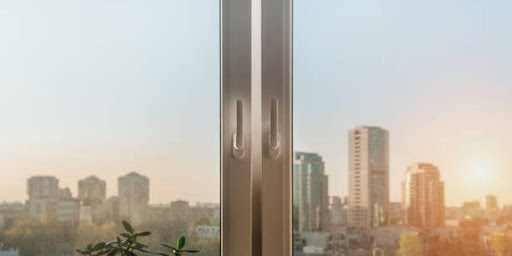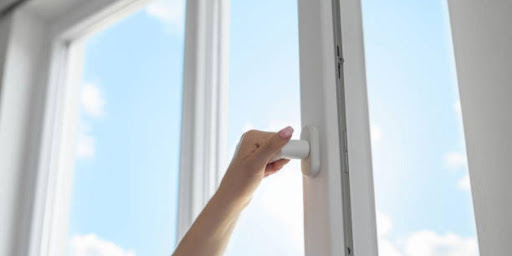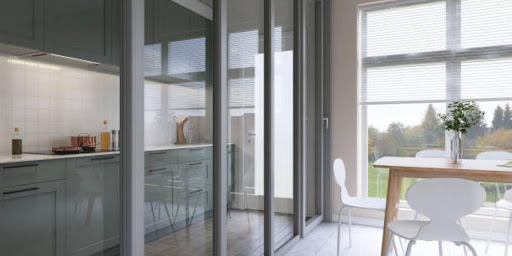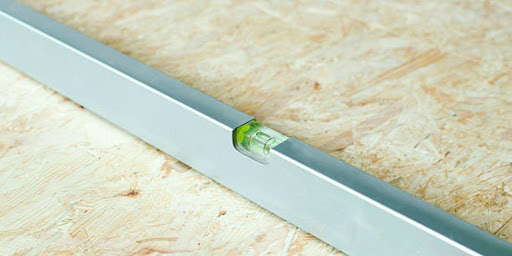Power Articles
Industry Elevating Content
Exploring Different Frame Materials for Windows and Doors

PowerArticles
July 17, 2023
When it comes to windows and doors, the choice of frame material can significantly impact both the aesthetic appeal and functional performance of these essential elements in a building. From traditional options like wood and metal to newer alternatives such as vinyl and fiberglass, exploring the different frame materials opens up a world of possibilities. This introduction will delve into the pros and cons of various frame materials, discussing their durability, energy efficiency, maintenance requirements, and design versatility, empowering homeowners and builders to make informed decisions in their quest for the perfect windows and doors that suit their specific needs and preferences.
Wood Frames
Wood frames have been used for centuries in constructing windows and doors, offering numerous benefits and a timeless aesthetic appeal. This section explores the characteristics and benefits of wood frames, different types of wood used for window and door frames, maintenance requirements and considerations, and cost considerations.
Characteristics and Benefits of Wood Frames
Wood frames possess several unique characteristics and benefits. Firstly, they provide excellent insulation properties, making them energy-efficient and helping to reduce heating and cooling costs. Wood is a natural insulator, minimizing heat transfer and maintaining a comfortable indoor environment. Additionally, wood frames offer a classic and warm appearance that complements various architectural styles. They can be stained or painted in different colors to match the overall design scheme of a building. Wood frames also have good structural integrity and durability, with proper care and maintenance, they can last for decades.
Different Types of Wood Used for Window and Door Frames
Various types of wood are utilized for window and door frames, each with its own unique characteristics. Common choices include oak, pine, mahogany, and maple. Oak is known for its strength and durability, making it a popular option for exterior frames. Pine is a softer wood that is widely used due to its affordability and versatility. Mahogany offers a rich and luxurious appearance and is highly resistant to rot and decay. Maple, on the other hand, is prized for its stability and ability to resist warping and shrinking.
Maintenance Requirements and Considerations for Wood Frames
Proper maintenance is crucial to ensure the longevity and beauty of wood frames. They should be regularly inspected for any signs of damage, such as rot, insect infestations, or water penetration. Wood frames must be protected from moisture by applying a sealant or paint, which should be periodically reapplied. Cleaning should be done with gentle, non-abrasive materials to avoid scratching or damaging the wood’s surface.
Cost Considerations
Wood frames generally fall into the mid-range of pricing options for window and door frames. The cost can vary depending on the type of wood chosen, the size of the frames, and any additional customization required. While wood frames may have a higher upfront cost compared to some other materials, their durability and energy efficiency can contribute to long-term savings on heating and cooling expenses. Additionally, the timeless appeal of wood frames can enhance the value and aesthetics of a property.

Aluminum Frames
Aluminum frames are a popular choice for windows and doors due to their numerous beneficial characteristics. First and foremost, aluminum is a lightweight yet strong material, making it ideal for framing applications. Its inherent strength allows for the creation of slim and sleek profiles, maximizing the glass area and providing a modern aesthetic. Additionally, aluminum frames are highly resistant to warping, cracking, and shrinking, ensuring long-term durability and stability. Moreover, aluminum is a non-combustible material, making it a safe choice for fire-prone areas.
Aluminum Alloys Commonly Used for Window and Door Frames
Various aluminum alloys are utilized for window and door frames, each offering specific advantages. The most commonly used alloys are from the 6000 series, such as 6063 and 6061. These alloys possess excellent strength-to-weight ratios, corrosion resistance, and extrudability, making them well-suited for frame fabrication. Additionally, alloying elements can be added to enhance further specific properties, such as improved thermal performance or increased strength.
Thermal Performance and Energy Efficiency of Aluminum Frames
Traditionally, aluminum frames were associated with poor thermal performance due to their high thermal conductivity. However, advancements in thermal break technology have significantly improved the energy efficiency of aluminum frames. Thermal breaks are inserts made of materials with low thermal conductivity, such as polyurethane, which create a barrier between the inner and outer aluminum sections, reducing heat transfer. Consequently, modern aluminum frames with thermal breaks can meet or exceed energy efficiency standards.
Design Options and Finishes Available for Aluminum Frames
Aluminum frames offer various design options to suit various architectural styles and preferences. They can be extruded into different shapes and profiles, allowing for customization and flexibility in design. Additionally, aluminum frames can be powder-coated or anodized, providing a vast array of finishes and colors to complement any aesthetic. This versatility allows homeowners and architects to achieve their desired look while maintaining the benefits of aluminum frames.
Durability and Resistance to Corrosion:
One of the notable advantages of aluminum frames is their exceptional durability and resistance to corrosion. Aluminum naturally forms a protective oxide layer when exposed to air, which acts as a barrier against corrosion. This inherent resistance makes aluminum frames highly suitable for coastal or humid environments, where saltwater or moisture can cause damage to other materials over time.
Cost Considerations
When considering frame materials for windows and doors, cost is an important factor. Aluminum frames generally fall within the mid-range in terms of cost, making them a popular choice for both residential and commercial applications. While they may have a higher upfront cost than some materials like vinyl, their long-term durability and low maintenance requirements can offset the initial investment.

Vinyl Frames
Vinyl frames are a popular choice for window and door frames due to their numerous advantages. This section will delve into the characteristics and benefits of vinyl frames, different types of vinyl used for window and door frames, energy efficiency and insulation properties, maintenance requirements, and considerations, design options and finishes available, as well as cost considerations.
Characteristics and benefits of vinyl frames
Vinyl frames are made from a durable and low-maintenance material called polyvinyl chloride (PVC). They are known for their excellent resistance to corrosion, rot, and pests, making them ideal for long-term use. Vinyl frames are also highly customizable, allowing homeowners to choose from various styles, colors, and finishes to complement their home’s aesthetics.
Different types of vinyl used for window and door frames
There are different types of vinyl used in window and door frames, including uPVC (unplasticized PVC) and PVC. uPVC is the most common type and is known for its exceptional strength and rigidity, making it suitable for larger windows and doors. PVC, on the other hand, is more flexible and is often used for smaller frames or in areas with moderate climate conditions.
Energy efficiency and insulation properties of vinyl frames
Vinyl frames excel in energy efficiency and insulation. They offer excellent thermal performance by preventing heat transfer between the interior and exterior, reducing energy consumption for heating and cooling. Additionally, vinyl frames can be enhanced with additional features such as double or triple glazing, low-emissivity coatings, and weatherstripping, further enhancing their insulation properties.
Maintenance requirements and considerations for vinyl frames
One of the significant benefits of vinyl frames is their low maintenance requirements. Unlike wood frames that may require regular painting or staining, vinyl frames are resistant to fading, peeling, and discoloration. They can be easily cleaned with mild soap and water, eliminating the need for specialized cleaning products or treatments.
Design options and finishes available for vinyl frames
Vinyl frames offer various design options and finishes to suit various architectural styles and personal preferences. Homeowners can choose from different frame profiles, including traditional, contemporary, or customized designs. Moreover, vinyl frames can be manufactured with a woodgrain texture, providing the look of wood without the associated maintenance.
Cost considerations
When it comes to cost, vinyl frames are often more affordable compared to other frame materials like wood or aluminum. Their cost-effectiveness is attributed to the availability of PVC, which is a relatively inexpensive material. Additionally, the long lifespan and low maintenance requirements of vinyl frames contribute to their overall value and cost savings over time.

Fiberglass Frames
Fiberglass frames have emerged as a popular choice for windows and doors due to their exceptional characteristics and benefits. In this section, we will explore the key aspects of fiberglass frames, including their thermal performance, durability, maintenance requirements, design options, and cost considerations.
Characteristics and Benefits of Fiberglass Frames
Fiberglass frames are constructed from a composite material of glass fibers embedded in a resin matrix. This combination results in a material that is incredibly strong, lightweight, and resistant to corrosion. Fiberglass frames offer excellent structural integrity and can withstand harsh weather conditions, making them highly suitable for residential and commercial applications.
Thermal Performance and Energy Efficiency of Fiberglass Frames
One of the significant advantages of fiberglass frames is their excellent thermal performance. They provide superior insulation properties, minimizing heat transfer and reducing energy consumption. Fiberglass frames often have a low thermal expansion rate, which helps prevent air leakage and ensures a tight seal, resulting in improved energy efficiency for the building.
Durability and Resistance to Warping, Rot, and Pests
Fiberglass frames are renowned for their exceptional durability. They are highly resistant to warping, cracking, and rotting, even in extreme temperature variations. Unlike wood frames, fiberglass frames do not attract pests, such as termites or ants, making them a reliable long-term investment for homeowners.
Maintenance Requirements and Considerations for Fiberglass Frames
Maintaining fiberglass frames is relatively easy compared to other materials. They require minimal upkeep and must not be repainted or stained regularly. Cleaning fiberglass frames typically involves simple routine maintenance with mild soap and water, making them an attractive option for those seeking low-maintenance solutions.
Design Options and Finishes Available for Fiberglass Frames
Fiberglass frames come in a wide range of design options and finishes. They can be customized to mimic the appearance of traditional wood frames or take on a modern aesthetic. The frames can be painted in various colors or stained to achieve a wood-like finish, providing flexibility to match any architectural style or personal preference.
Cost Considerations
While fiberglass frames may have a higher upfront cost compared to other materials like vinyl, their long-term benefits often outweigh the initial investment. The durability and energy efficiency of fiberglass frames can lead to significant savings on heating and cooling costs over time. Additionally, the low maintenance requirements further contribute to cost savings in the long run.

Conclusion
In conclusion, exploring different frame materials for windows and doors is crucial for homeowners and builders seeking to enhance energy efficiency, durability, and aesthetic appeal. By considering options such as wood, vinyl, aluminum, and fiberglass, individuals can make informed decisions based on their specific requirements and preferences. Each material possesses distinct advantages and disadvantages, ranging from natural beauty and insulating properties to low maintenance and affordability. Careful evaluation of factors like climate, budget, and desired style will ensure the selection of the most suitable frame material, ultimately resulting in enhanced comfort, reduced energy costs, and long-term satisfaction with windows and doors.
Published By
PowerArticles
July 17, 2023